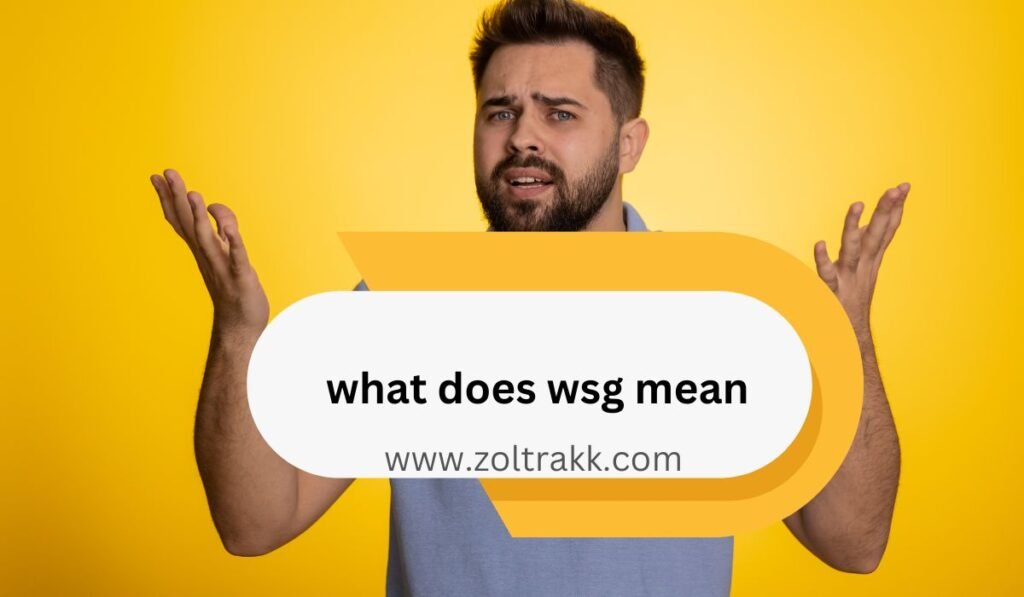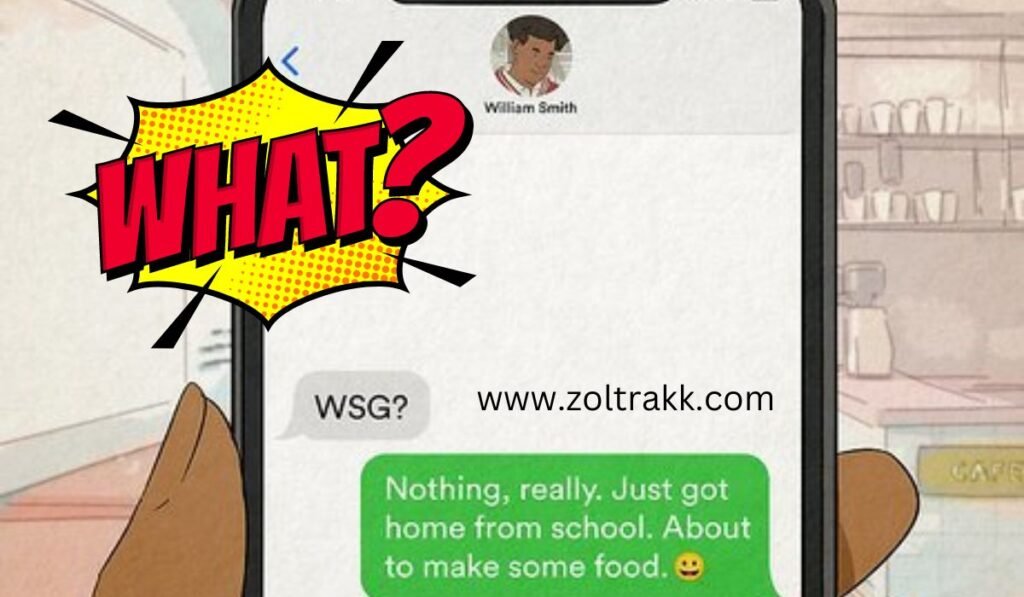Short for “What’s Good,” WSG is a common vernacular phrase used in digital communication. Originally from urban lingo, WSG has been modified into internet chats and SMS messages asking how someone is doing or investigating their present circumstances. On social media sites such as TikHub, Twitter, and Instagram, the phrase has become rather popular and a mainstay in the vocabulary of Millennials and Generation Z. This paper closely explores the meaning , its background, applications in several situations, and the reasons behind its current popularity in digital culture.
Key Takeaways from the Article
- Definition of WSG: stands for “What’s Good” and is often used in text messaging or online conversations.
- Usage Context: Commonly employed to ask about someone’s well-being, current situation, or to initiate a conversation.
- Popularity Trends: The phrase gained traction on social media platforms such as TikTok and Twitter.
- Demographic Insights: Predominantly used by younger audiences, particularly Gen Z and Millennials.
- Evolving Language: WSG represents the ongoing evolution of internet slang and language in digital communication.
- Common FAQs: Addresses common questions about the meaning, origin, and usage in various contexts.
What does WSG stand for?

“What’s Good,” or WSG for short, is a colloquial approach of asking someone, “How are you?” or “What’s happening?” Like “What’s up?” or “How’s it going?” it’s a laid-back welcome. Often used in social media and text messaging, WSG has evolved into a quick and casual approach to follow up with someone or start a conversation.
Where WSG originated
African American Vernacular English (AAVE), a dialect sometimes connected with urban culture and hip-hop, is where WSG started. Phrases like “What’s Good?” moved into general vocabulary over time and finally into internet environments, where they developed into acronyms like . Social media channels, where brevity and fast communication are highly prized, drove this change most of all.
In digital communication, how does find the application?
Direct messages, text messages, and social media comments start discussions using . As a matter of fact:
- “Hey, WSG!” says text messaging.
- Social Media: uploading a picture with the caption and asking friends to leave comments.
- Group chats let WSG be used to view what’s happening and address everyone together.
WSG’s popularity in social media
On social networking sites, including Instagram, Twitter, and TikHub, has seen an explosion in popularity. Over 68% of Gen Z users often utilize slang terminology like in their online conversations, according to a 2023 Social Media Today survey. The urge for quick and effective communication in digital environments helps to explain this increase.
Social Media Usage by Platform (2023)
| Platform | Percentage of Posts Containing WSG (%) |
|---|---|
| TikTok | 45 |
| 30 | |
| 25 |
Why Have WSG Become Popular?
WSG’s simplicity and simplicity of usage help to explain its appeal. It fits nicely with the online culture of abbreviating words and sentences for faster communication. Furthermore, the word is flexible and can be employed in many situations, from casual meetings to flirty talks. Younger groups especially like since it is flexible.
Who Most Uses WSG? Demographic Insights
A Pew Research Center 2023 survey indicates that younger audiences most utilize :
- Gen Z (10–25): 65% utilization
- Ages 26–41: millennials: 30% usage
- Gen X and Older—ages 42+—5% usage
Given their frequent use of digital communication, Gen Z—who are most likely to be using and comparable slang terms—is most likely popular
WSG versus Other Common Slang Terms
- Internet slang changes quickly; is only one of several terms that have gained popularity. Others are:
- WYD, or What You Are Doing: a more direct inquiry regarding the present activity of someone.
- Hit Me Up, or HMU, is an invitation to message or contact the sender.
How to Use Appropriately?
Although WSG is generally accepted in casual environments, it’s essential to know the context in which it ought to be applied. The following is some advice:
- Know Your Audience: Use among friends, peers, or people conversant with internet lingo. Steer clear of including it in official or business correspondence.
- Context counts: Use as a laid-back greeting or starting point for a conversation. Serious or official conversations are not suited for it.
- Add Emojis to it: Often accompanying to communicate tone or mood, emojis include or to show friendliness or inquiry.
Frequencies Regarding
On TikHub, what is WSG?
On TikHub, WSG is frequently used in comments or captions to ask followers, “What’s Good?” It fosters participation and conversation, motivating followers to remark on the material or share what is occurring in their lives.
Does WSG match “What’s Up”?
Though it has a somewhat distinct tone, is comparable in meaning to “What’s Up.” Although “What’s Up” is more of a friendly greeting, can suggest a more particular check-in or curiosity in the other person’s present situation or behavior.
Is WSG Excessive?
Indeed, WSG can be used flirtatiously, particularly about specific emojis or during a more intimate discourse. The term might suggest cheerful or playful curiosity about someone’s goals or well-being.
How Should I Approach WSG?
The context will affect the responses to WSG:
- Casual: “Not quite much, WBU?” (What About You?).
- Personal: “Just chilly, thinking about you.”
- Attractive: “Hey! Just came out of an exercise. What’s great with you?
Why Are Younger People Mostly Using WSG?
WSG fits the communication style of younger individuals who choose casual, short, and direct language. More connected to internet culture, Gen Z and Millennials find useful for brief exchanges.
Conclusion
One perfect illustration of how language changes with technology and societal changes is the phrase . It captures the necessity of simplicity, quickness, and informality in digital communication. Terms like will either become more ingrained in daily language or vanish as internet slang develops, replaced with fresh idioms that more precisely reflect the zeitgeist of the next generations.
Tracking Trends and Consumption
Use Google Trends, Social Mention, and other social listening tools to keep current on changing online terminology like . These instruments let us monitor the evolving contexts and popularity of slang phrases on several digital media.
Last Notes
Like many internet slang phrases, is a cultural identifier that captures the dynamics of contemporary communication rather than a phrase. Knowing such terminology helps us better understand how language and interaction change in the digital age, influencing our online connection, sharing, and expression of oneself.


